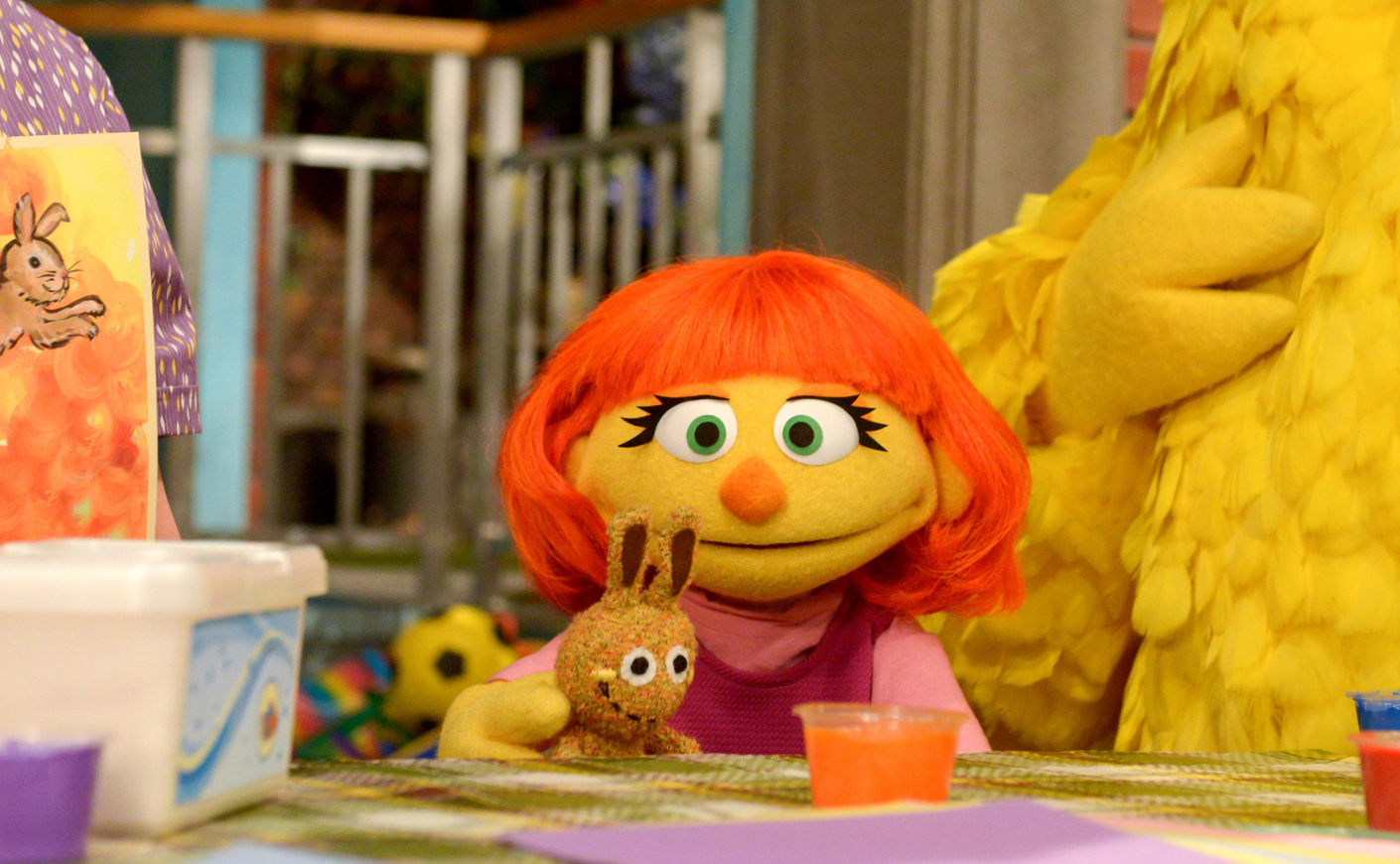About one in 36 children has been diagnosed with autism spectrum disorder, according to the CDC. So it’s pretty likely you know a child with autism, be they your cousin, your granddaughter, or your lively 8-year-old neighbor. And it probably doesn’t come as a surprise that children’s programming has stepped up to the plate to address the unique differences between children — especially the beloved television series Sesame Street.
Every April, during Autism Awareness Month, Sesame Workshop (the nonprofit org behind Sesame Street) builds on their “See Amazing in All Children” initiative. This year, the program is celebrating its 10th anniversary, but if you haven’t been plugged into their programming, we’ll catch you up to speed.
To learn more, KCM sat down with Jeanette Betancourt, Ed. D., the Senior Vice President for U.S. Social Impact at Sesame Workshop. She discusses how the workshop created the very first autistic muppet, a new storybook that anyone can access for free, and why this type of inclusive programming is important for every child.
KCM: Who does See Amazing in All Children serve?
Dr. Jeanette Bentacourt: It’s for both neurotypical children and neurodivergent children. What we found through our research was that the advantage that Sesame had was bringing together neurotypical children and neurodiverse children and seeing what’s amazing in all of them, along with the adults around them.
It’s represented through Julia, a wonderful autistic 4-year-old Muppet, and her connection with her Sesame Street friends and her family — her dad, her mom, her brother Samuel. That came from feedback from the community. A lot of times we kept hearing, “What about Julia’s mom and dad? What about her family life?” So we grew and continue to do so in response to what we heard.
How was Julia created? What was that process like?
First, even before Julia appeared, we gathered experts across a variety of fields. Some of them were neurotypical, some of them were neurodivergent, but all were familiar with the autistic community. We got their insights on not only what needs could be served, but where Sesame could play that unique role. It was really insightful because they said, “We need you to do what Sesame does” — bring all children together, as we’ve done historically through our 50-odd years.
Then we went out into the community, we did focus groups with children who were in mixed families who had both a neurotypical young child as well as an autistic child. We also worked directly with families who had autistic children. Then we worked with those providers that serve the autistic community, alongside the mixed inclusion early childhood community. We got their guidance on what they needed.
What they really needed was the appropriate language to use, and [guidance about] how to connect children together and also celebrate their uniqueness, without looking at it from a deficit point of view. From there, we created a whole variety of resources. The first one was the recommendation that we should have an autistic Muppet. She initially appeared in a storybook. And then suddenly everybody goes, “Oh my gosh, this wonderful Muppet!” Not only the autistic community, but the neurotypical community said, “Let’s bring her to life.” She’s just grown from there.
And Julia’s starring in a new storybook.
This is a free, digital storybook; Julia’s mom, who’s an art therapist, brings both Julia and [Julia’s brother] Samuel together. Julia’s mom introduces pottery, because that’s something Julia’s [great]-grandmother did. The book demonstrates the value of art and how to take families’ lived experiences to do that. But the book also demonstrates how to include the differences between Samuel’s interests and Julia’s, and model them together.
We had other resources from some of our experts who either have autistic children themselves or are working within the autistic community. And because of feedback, we emphasized non-verbal communication. How do we acknowledge that children demonstrate a variety of talents in different ways? And how do we demonstrate that we shouldn’t always depend on children who are more verbal, but rather look at the whole spectrum of autistic children?
So grandparents and other family members — not just parents — can use these resources?
Absolutely. Not only parents, but the entire family. And I think what’s really nice about the broad scope of our resources is they’re looking at that context as well. Particularly with grandparents, this is a way that they can connect.
And we also find that [these resources] represent the commonness of autism spectrum disorders. Children who are neurotypical are asking questions. “How is he or she like me?” or “How are they unique?” So these are tools to also engage in that conversation.
What is the value of Autism Awareness Month?
Autism Awareness Month has grown globally, and it’s changed. It’s now this idea of bringing awareness in a much more positive and inclusive way of appreciating all children, but at the same time really looking at uniqueness. But also never looking at [children] from a point of view of deficit. I think that’s really the shift now. In the past, we focused on challenges. We’re trying to highlight uniqueness and the joy of all children.
Also, we want to acknowledge that there’s a wide spectrum when we are speaking about the autism community — we can all be part of it. Very likely in every community, in every school, and every faith-based setting, wherever you go, there may be someone from the autistic community.









